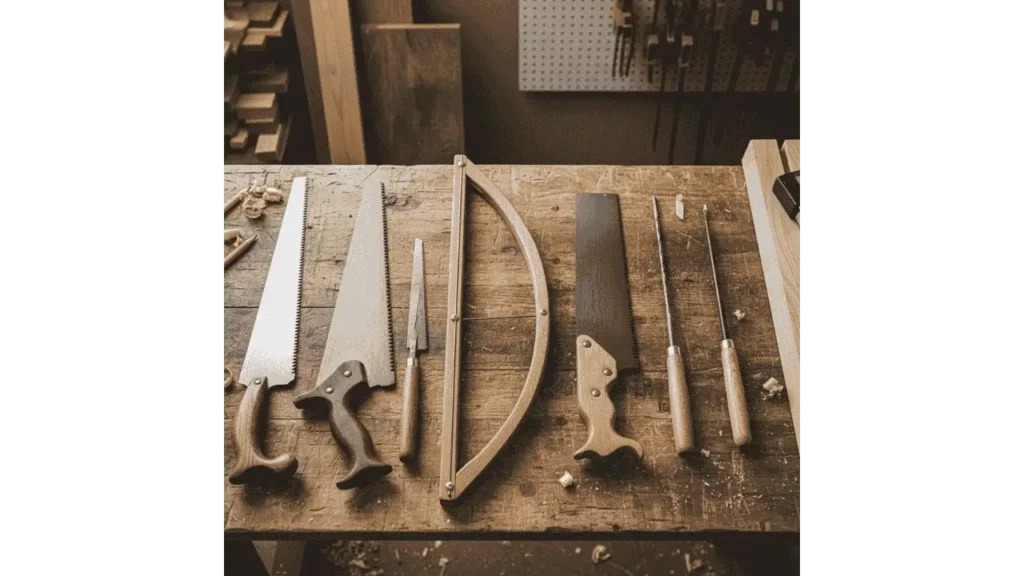Hand saws have been an essential tool for woodworking for centuries, offering precision and versatility unmatched by power tools in certain tasks. Choosing the right saw can save time, improve accuracy, and enhance safety, whether you’re a professional carpenter or a DIY enthusiast. Let’s explore the main types of hand saws, their intended uses, and practical tips to select the best tool for each cutting scenario. By understanding their design and function, homeowners can tackle wood cutting projects more confidently and effectively.

The Basics: Rip Saws vs. Crosscut Saws
Rip Saws
Rip saws are engineered to cut along the wood grain. They feature large, coarse teeth, typically around 4–7 TPI (teeth per inch), with an aggressive rake angle that enables fast “rip” cuts. These saws excel at breaking down larger boards or panels quickly, but they tend to leave a rougher surface, often requiring sanding or finishing. As woodworking expert John Heisz notes,
“Rip saws are the backbone of any carpentry toolkit when speed along the grain is necessary, but control should not be sacrificed.”
Crosscut Saws
Crosscut saws are designed for cutting across the grain. Their teeth are smaller and knife-like (8–15 TPI), slicing fibers cleanly to produce smooth edges. Crosscutting demands a different technique than ripping; the saw is pulled gently with a controlled motion to prevent splintering. When precise joints or finish-ready edges are needed, a crosscut saw is indispensable. Woodworking instructor Emily Carson advises,
“Crosscut saws turn a difficult grain cut into a clean, professional edge if used with patience and proper alignment.”
Precision Back and Tenon Saws
Backsaws (Including Tenon & Dovetail Saws)
Backsaws have reinforced spines that keep the blade rigid, making them perfect for fine joinery work such as tenons, miters, and dovetail joints. Their rigidity allows precise, straight cuts, minimizing deviations that can compromise joinery quality. They are compact yet highly reliable for delicate carpentry tasks.
Tenon Saw Highlights
Tenon saws are a specialized type of backsaw with a rigid spine and fine teeth, typically 10–14 TPI. They are tailored for precise, straight cuts and excel in trim work or cabinetry. Their ability to hold a clean line over extended cuts makes them essential for craftsmen who prioritize accuracy over speed.
Intricate and Curved Cuts
Coping Saw
Coping saws are ideal for detailed work like coping joints or intricate patterns. They use a thin blade held in a tensioned frame, allowing sharp turns and precise control. While slower than traditional saws, coping saws enable accuracy that is otherwise impossible for curved or delicate woodwork.
Keyhole & Compass Saws
Keyhole saws, also known as jab saws, excel at cutting tight curves or creating access holes in wood or drywall. Compass saws are longer and sturdier, suitable for subfloor or panel openings. Both provide versatility when navigating constrained spaces, making them a must-have for home renovation and repair projects.
Cutting Large or Irregular Material
Bow and Bucksaws
Bow saws and bucksaws are designed for cutting logs or rough lumber. Their tensioned frame holds a coarse blade that performs well outdoors or on irregular timber. These saws are ideal for initial breakdowns of large wood pieces before finer cuts with hand saws or power tools.
Panel (Box) Saw
Panel saws, sometimes called box saws, are compact versions of crosscut saws. They are portable, making them convenient for quick cuts on sheets or small boards. While not designed for heavy-duty work, they are handy for light carpentry and DIY projects around the home.
Versatile Specialty Saws
Hacksaw
Although commonly used for metal, hacksaws with fine-toothed blades can cut delicate wood or plastic. They offer control for precise cuts in non-wood materials or very thin wood sheets, bridging the gap between woodworking and general household repair needs.
Japanese Pull Saw (and Razor Saws)
Japanese pull saws cut on the pull stroke, providing exceptional control and cleaner, finer cuts than traditional push saws. Razor saws, a variant, offer ultra-fine blades for model making or intricate woodworking. These tools are valued for precision tasks where minimal material loss and clean edges are critical.
Final Takeaways
Choosing the right hand saw depends on the material, cut type, and level of precision required. Use rip saws for quick, rough cuts along the grain, and crosscut saws for smooth, cross-grain slicing. Backsaws and tenon saws handle precise joinery, while coping and keyhole saws manage intricate curves. Bow and bucksaws excel at rough outdoor cuts, and specialty saws like hacksaws or Japanese-style saws add finesse and versatility. Selecting the appropriate saw not only improves efficiency but also enhances safety and the quality of your woodworking projects. As woodworking expert Michael J. MacDonald emphasizes,
“A well-chosen hand saw turns a daunting task into a manageable, precise operation—invest in knowledge as much as in tools.”
- How to Cut a Straight Line with a Jigsaw? - October 31, 2025
- How to Cut a Circle with a Jigsaw? - October 31, 2025
- Can You Cut Acrylic with a Jigsaw? - October 31, 2025
